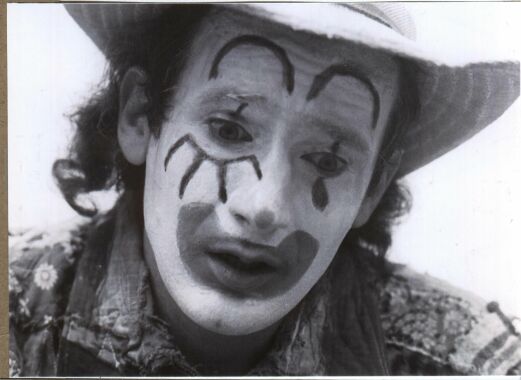« Read other entries… »

Ken Feit, Holy FoolIn 1968 I met a young Jesuit seminarian, Ken Feit who was studying at St. Louis University where I had also had been a Jesuit seminarian. I had left the Jesuit religious order and subsequently had been involved in the Milwaukee 14 action, 14 of us had entered the selective service building in Miwaukee, seized the 1A draft records and burned them with napalm; then surrendering ourselves to the police out of a moral conviction that modern warfare, in particular the Vietnam War, was immoral.
I was out of bail for the Milwaukee 14 action and at St. Louis University to give a talk about it. After my talk Ken read one what he called a ‘sound poem’ about the Milwaukee 14 action. You can find part of it below with Ken’s comments on it.
Ken came to mind today, April 1st, because after leaving the Jesuit religious order he came to live in Milwaukee and gradually became what he called a ‘holy fool’. He became an Itinerant fool, storyteller, poet, flea circus ringmaster, clown, mine and a good friend to many. He was the connection between persons, traveling the county telling friends what other friends were doing.
We were leaving once in Philadelphia and Ken Feit came into our neighborhood looking for us. He asked some children and they did not know who we were. He then asked the children if they knew our sons David and Peter. They said yes and lead him to our house where he updated us on what was happening with friends.
Ken died in a tragic car accident in 1981 but this ‘holy fool’s’ memories and stories live on. Below is one of his “Traditional Stories about Peace and War” and a piece of his writing about a Milwaukee 14 sound poem.
“Once a samurai warrior went to a monastery and asked a monk, “Can you tell me about heaven and hell?” The monk answered, “I cannot tell you about heaven and hell. You are much too stupid.” The warrior¹s face became contorted with rage. “Besides that,” continued the monk, “you are very ugly.” The warrior gave a scream and raised his sword to strike the monk. “That,” said the monk unflinchingly, “is hell.” The samurai slowly lowered his sword and bowed his head. “And that,” said the monk, “is heaven.”
“The second resistance poem concerns the Milwaukee 14. Briefly these were fourteen individuals who banded together outside a draft record office in Milwaukee, entered the building, seized the records and burned them with napalm, then surrendered themselves to the police and awaited trial and imprisonment—all of this on the moral conviction that modern warfare (especially in Vietnam) is immoral.
The poem ends with a chant:
flaritza floom
nakatchoooheeeeeee
rivoslit click
(chant) oooharruu!
The poem in its first line describes flames licking burning draft records skyward….flaritza. The itza is the crackling flame of the flaritza paper burning, floom is the flaming plume ascending, an ancient sacrifice to the forces of life straight out of the Old testament. So you have the ‘action’ of the ‘14′, the flaritza floom. Then the aftermath, the ashy destruction…nakatch, watered-down paper burned beyond recognition….nakatchoooheeeeeee….with a background of wailing police sirens as the men stand together in song and prayer. There is a moment of self-surrender and a special kind of authority, a sort of palms-down admission of deliberate, illegal action with an inner defiance and the click is a sterile stainless steel, sterling-silver sort of rubber stamping legalistic action, perhaps like the surrender of Christ to the Roman authorities on Holy Thursday night, as though tab A is placed in slot A. And then, in the end there’s a chant…..oooharruu! It involves mental doubt, self-accusation, the man in prison who asks himself, “Did I do the right thing? Was there a better way? Who did I hurt? If I could do it over would I do it again?” And along with this self-torment—the measure of a truly human act—there is a mixture of defiance, despair and unresolved questioning. Perhaps the cry of Christ on the cross—’My God, my God, why have you forsaken me!’-- is close to the feeling of this chant because there is no answer to the question. It must work itself out in time, perhaps in the solitude of prison or prayer or death.”
Comments
(:commentboxchrono:)